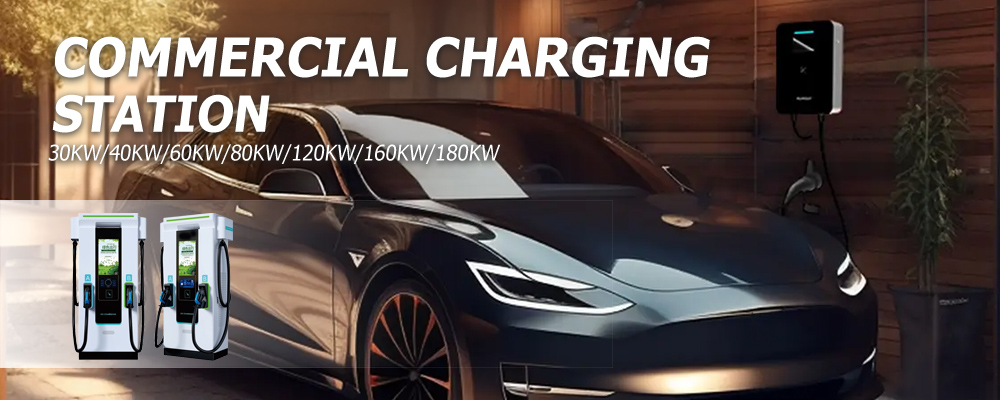I. Electric vehicle charging technology system: classification standards and scenario adaptation
1. Charging classification: power determines efficiency
Level 1 (120V AC charging): Using a standard household socket, the power is only 1.4kW, and the energy replenishment is 4-5 miles per hour. It is suitable for emergency charging, but it takes more than 50 hours to fully charge.
Level 2 (240V AC charging): Power 11-22kW, 20-40 miles per hour, compatible with home charging piles and public slow charging piles, such as 7kW home piles to meet nighttime charging needs.
DC fast charging (DC fast charging): Power above 60kW, 30 minutes to 80% energy.
Technical comparison: Home scenarios are mainly Level 2, public highway service areas rely on DC fast charging, and emerging technologies such as wireless charging are still in the pilot stage.
2. Home charging station: a golden combination of low cost and intelligence
2. 7kW home charging pile: a win-win situation of economy and convenience
Installation cost: The equipment price is about 2,000-4,000 yuan, including special circuit modification (4-6 square cables) and labor costs. Some car companies provide free installation services.
Advantages of use: Under time-of-use electricity prices, the cost of nighttime charging is only 1/3 of public charging, such as 0.3 yuan/kWh for Beijing residents in valley electricity, and the full charge fee is less than 20 yuan.
Intelligent upgrade: support APP remote control, charging reservation and OTA firmware update.
Policy support: many places provide up to 3,000 yuan installation subsidy.
3. Commercial charging station: the game between economies of scale and user experience
3. Public fast charging network: the layout logic of highways and urban hubs
Equipment selection: mainly 120-180kW DC piles, the cost of a single gun is about 50,000-80,000 yuan, and a matching transformer (above 630kVA) and an intelligent power distribution system are required.
Operation mode: adopt the "basic electricity fee + service fee" structure, and the service fee accounts for as high as 39%-55%. For example, the single service fee of Kaimaisi charging station exceeds 20 yuan.
Pain point analysis: poor equipment compatibility (some models cannot be charged at full power), serious queues during peak hours, and dynamic scheduling algorithms are needed to optimize resource allocation.
Case: The State Grid 800V supercharging station achieves a peak power of 232kW and replenishes 50% in 9 minutes, but the construction cost exceeds one million.
Fourth, cost structure and return on investment: financial model from home to business
4. Home charging: long-term assets with low investment and high returns
Initial cost: The total investment of a 7kW pile is about 5,000 yuan (including equipment and installation), with a service life of more than 10 years, and an average annual cost of only 500 yuan.
Benefit scenario: Private pile sharing can obtain an average monthly income of 300-800 yuan, and the utilization rate is increased by 30%.
5. Commercial charging: Profit challenge under heavy assets
Construction cost: The cost of a single pile of a 120kW fast charging station exceeds 100,000 yuan, and the total investment of 10 pile stations is about 1.5 million yuan (including power expansion).
Profit cycle: The average daily charging volume must reach more than 2,000kWh to cover the operating costs, and the payback period in the core area of first-tier cities is about 5-8 years.
Policy dividends: Some cities provide 0.2 yuan/kWh operating subsidies for public charging stations, up to 2 million yuan/station.
V. Compatibility and standardization: the key to breaking the charging barrier
6. Interface unification and protocol adaptation
National standard compatibility: China adopts the GB/T standard, but some imported models require adapters, which affects charging efficiency.
Protocol upgrade: Charging piles that support the OCPP 2.0 protocol can be connected to third-party platforms.
VI. Intelligent trend: from hardware facilities to data ecology
7. Software-defined charging: Deep penetration of AI and big data
Dynamic pricing: Adjust electricity prices based on grid load and user demand, such as Shenzhen's nighttime electricity price as low as 0.1 yuan/kWh.
Predictive maintenance: Monitor the health status of the pile body through current sensors, and the fault warning accuracy rate reaches 90%.
Platform integration: Aggregate APPs (such as "Add Power") integrate multi-brand pile resources, and the user's cross-platform reservation success rate increases by 40%.
VII. Policy drive and market expansion: global competition pattern
8. Leading advantage in the Chinese market
Infrastructure goal: By 2025, the ratio of cars to piles will be reduced to 2:1, and the proportion of public fast charging will exceed 30%, leading the European and American markets. Capital layout: Cross-border giants enter the market to promote the implementation of integrated power stations of "solar storage and charging".
International comparison: Europe compels new buildings to be equipped with charging piles, and the US IRA Act provides a tax credit of up to 30%, with unprecedented policy strength.
Summary: The future of charging infrastructure
The electric vehicle charging network is evolving from a single energy replenishment facility to a smart city energy node. Home charging has become a rigid demand for users relying on low cost and intelligent advantages, while commercial charging needs to break through the profit bottleneck through technological innovation and ecological synergy. With the popularization of V2G (vehicle to grid) technology and the improvement of carbon trading mechanisms, charging facilities will deeply participate in the regulation of the power market and promote the realization of the dual carbon goals of transportation and energy systems. Investors need to pay attention to policy dividends and technological iterations to build a full-stack competitiveness of "hardware + software + service".

